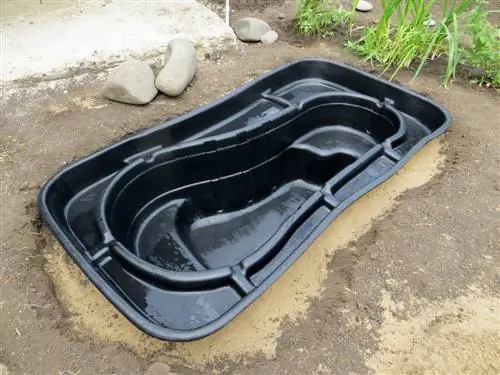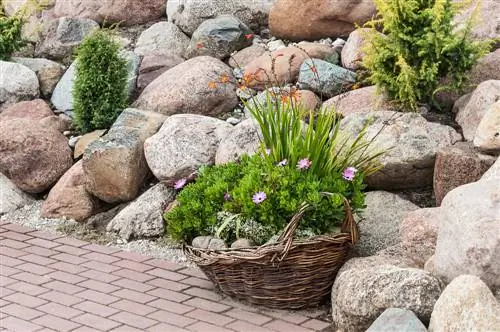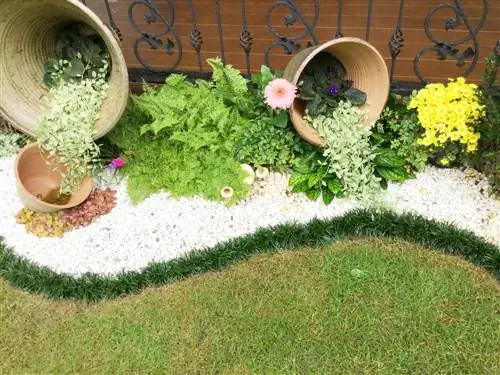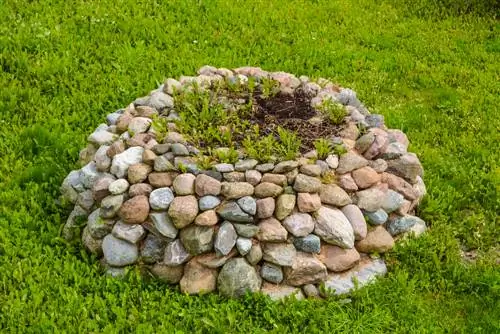- Author admin [email protected].
- Public 2023-12-16 16:46.
- Last modified 2025-01-23 11:21.
Whether vegetable plants, vines or decorative plants such as ivy, clematis or roses, numerous plant species spread their shoots in all directions, but require a climbing aid to do so. Although steel cables provide the necessary support, they do not necessarily contribute to a harmonious look. This material is particularly out of place in natural gardens. A willow trellis, on the other hand, fits harmoniously into the overall picture and still stands out as an eye-catcher. Fortunately, with a little skill you can easily make the climbing columns yourself.
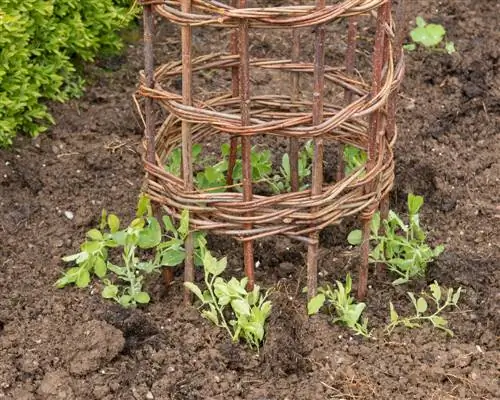
How do I make a willow trellis myself?
You can easily build a willow trellis yourself by weaving flexible willow rods horizontally or vertically around a basic element, such as wooden posts or a wooden disc. Thin wire, which is tightened with a rod tensioner, is suitable for fixing the branches.
Various shapes
There are no limits to your imagination when designing your willow trellis. Depending on how much time and effort you want to invest in the homemade braid, you can create the most impressive structures. When choosing rods, be sure to consider their intended use. Young shoots are easier to bend than those that are already woody. If necessary, simply soak the less elastic branches in water for a few days. You could then create the following climbing aids, for example:
- Climbing fences
- Pyramids
- Obelisks
- Grid
- Columns
The shapes mentioned are just examples of the external shape. A willow trellis appears even more impressive if you weave patterns such as circles or waves into the basic shape.
Build your own willow trellis
The trade offers a variety of different climbing aids made from willow. Visit a garden center to get some inspiration. Then lend a hand yourself.
Tool
It's best to get a wire drill (€39.00 on Amazon). The so-called Rödler and the associated eyelet wires make handling easier.
- Insert the rodder's hooks into the loops at the end of the wires.
- Place the clamped wire around the pasture rods to connect them together.
- Then thread the hook and tighten it with the rodder.
Instructions
- Think of a basic shape.
- A two-dimensional fence requires wooden posts as support.
- A three-dimensional figure requires a wooden disc as a base.
- Braid the flexible willow rods horizontally or vertically around the base element.
- Thin wire helps fix the branches.


